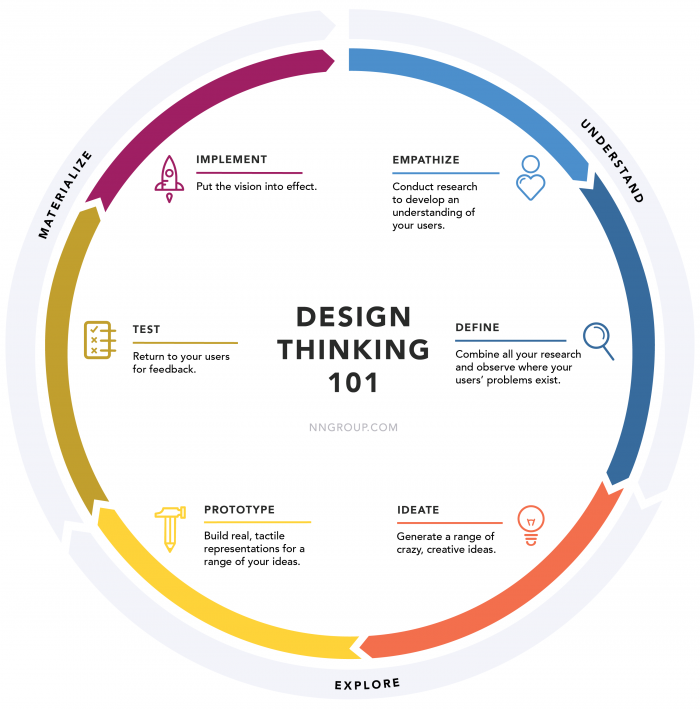How design thinking can be used to create a strong, positive workforce
How can we apply design thinking techniques to tackling mental health in the workplace? On the surface of it, the two don’t seem to be related but actually, there are a number of important principles in design thinking that can help us to improve the workplace experience.
What is design thinking?
Design thinking is not just a concept limited to the design community. It can be applied much more widely because it is in essence, a framework that we can use to generate and test innovative solutions through creative problem solving. It uses a collaborative human centred approach to brainstorm ideas and encourages participants to draw on their strengths to work together to define the problem, generate ideas and solutions, experiment with concepts and prototypes, field test them and evaluate results. Those results can then be used to solve the challenge that is being looked at.
To really understand how we can use this technique to improve mental wellbeing in the workplace, we can break workplace satisfaction into three key areas and apply design thinking to each one

People
We know that the best workplaces contain happy, fulfilled workers who are invested in the company and its values and feel genuinely committed to working there. They also tend to be part of a like minded team with common goals. As a leader, you can apply design thinking to activities at a strategic definition, change project or operational activity level and, with the inclusion of each of your team members in the different circumstances. Involvement and contribution from everyone is a key enabler to individual and organisational wellbeing, as well as providing the mechanisms for group refinement of ideas and co-ownership of commitments made.
As people are trained in and develop design thinking skills, there is opportunity to provide individual and discreet performance feedback, tailored to the person that they are. There is no one size fits all with design thinking and using a human centred empathetic approach can help you to create an experience that fits each individual as well as benefiting the team and organisation overall.
Purpose
The best places to work also have a common purpose and each person plays a role in the company’s success. For those in charge, learning how and when to let go is an important factor in the success of a motivated workforce and entails having the confidence to trust people, empower them and give them the independence to get on with the task entrusted to them. Using design thinking techniques to manage tasks innovatively, inclusively and achieve actionable outcomes is empowering because the solution is brainstormed and tested as part of a team process with the key stakeholder communities at the heart of any decision made. Using design thinking can help you and your team work through individual challenges as one group and rapidly test for workable and beneficial solutions to problems.
Positive place
Knowing your team means understanding what motivates and interests them and what they want from their careers. A good workplace generates positivity and that comes with a good team that works well together. This in turn creates a positive mental mindset and a good foundation for mental wellness. Using design thinking, which focuses heavily on empathy and really understands the people you are working alongside, can allow you to create a tailored team and a workplace that takes account of each individual’s requirements.
Applying these techniques
I’ve used design thinking type approaches in many situations throughout my career because, in my view, it is a process that enables you to test formative and abstract ideas using a human centred approach and agree on one concept that really works. For example, in one of my previous roles as CIO at the London School of Hygiene & Tropical Medicine, we applied a design thinking approach to a number of projects including looking at ways to improve the student experience and lifecycle i.e. from first point of contact right the way through to when that individual became an alumni. By focusing on this particular challenge, we involved both staff and students in testing theories, technologies and solutions using a design thinking approach. Our final solution was a result of this cross collaboration and testing in which everybody affected had played a part. It was also then possible to subsequently focus on a smaller element of the lifecycle and improve that further.
Design thinking has long outgrown its roots in the design community. Its principles of human centred decision making, collaboration and working together to test, experiment and come up with solutions as a group should be adopted more formally as a way of improving team working and job satisfaction in the workplace. By creating a human centred, collaborative approach to work, employees feel a greater sense of involvement, contribution, belonging and fulfilment, which in turn improves mental wellbeing as well as delivering to organisational objectives.

